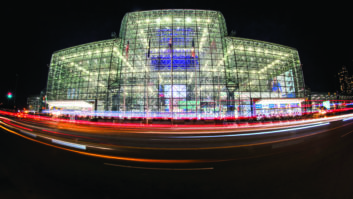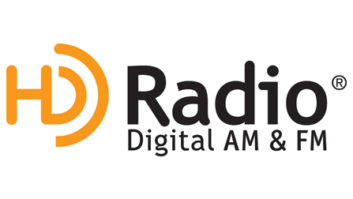FM HD Radio Achieves Mainstream Feel at 2010 NAB Show
Apr 21, 2010 12:18 PM, By Mark Krieger
If there was anything notable from the radio side at the 2010 NAB Show, other than a palpable sense that the worst is over, it’s that HD Radio has become more of a fixture than a question mark, at least on FM.
Starting with transmitters, the emphasis was on how to achieve new maximized FM IBOC digital power levels without busting budgets. At Continental Electronics, the answer is a textbook approach: take a big tube, bias it into the most linear portion of its operating curve, and everything will work just fine, albeit with a bigger power bill at the end of each month. At Broadcast Electronics, there was talk of Vector Power Enhancement (VPE), which promises to use an advanced crest factor control to improve efficiency of final amplifiers now forced to operate more like audio than RF devices. In other words, all the transmitter manufacturers are in touch with the fact that higher-power FM digital is something that’s top of mind for broadcasters. The trick of course, is how to make it happen in an affordable way. Nautel also showed its established HD Power Boost system.
On the application side, there seems to be no shortage of imagination. Ibiquity demonstrated that the new CAP requirement for EAS is a good match with the ancillary data capacity of HD Radio, work continues on developing electronic program guides (EPGs), and the term “quadcast” drives home the fact that multichannel delivery is the raison d’etre driving HD Radio adoption. Refinements such as automatic digital/analog time alignment, improved data importing and better STL options, all make FM HD Radio feel less daunting than in the past.
But it’s the end user side that’s really beginning to look as though HD Radio is here to stay. A plethora of receivers were on display in all sizes, shapes and form factors. And when compared against major digital radio platforms such as DRM and DAB/DMB, this is where HD Radio really stands out. There’s a lot of product out there, despite the fact that uptake has been slow, and iBiquity deserves a lot of credit for that. It’s also a fact that hasn’t gone unnoticed in Mexico, Brazil, Switzerland and (reportedly) China.
The future for AM HD Radio doesn’t feel nearly as secure. Ibiquity seems to have made a concession to the reality of staying alive here and now on the medium-wave band by offering a compromise mode of AM IBOC that trades down digital bandwidth for acceptable analog audio quality. Among AM license holders, interest these days seems to have shifted from a digital solution to AM’s woes to what’s available in the next FM translator filing window. To be sure, AM IBOC still has a few champions, but looking at receivers, it’s clear their passion isn’t moving anyone at the retail level. Long wavelengths remain a huge handicap in an era of tiny, processor-driven devices.
Every year since IBOC launched in 2002 has been viewed as make-or-break for the technology. With no sharp upward knee in consumer adoption yet apparent, critics have pronounced HD Radio DOA many times. But the 2010 NAB Show succeeded in reinforcing the feeling that FM HD Radio is becoming a fact of life for American radio, regardless of its leisurely acceptance by public and broadcaster alike.
IBOC by State: North Carolina (April 2010)
There are 66 stations in the Old North State broadcasting 108 HD Radio channels….
AM Operators Now Have IBOC Digital Options
IBiquity’s new modified MA1 specification allows broadcasters to sacrifice a degree of digital throughput in exchange for a somewhat higher analog bandwidth and a commensurate noise-floor reduction in analog receivers….












